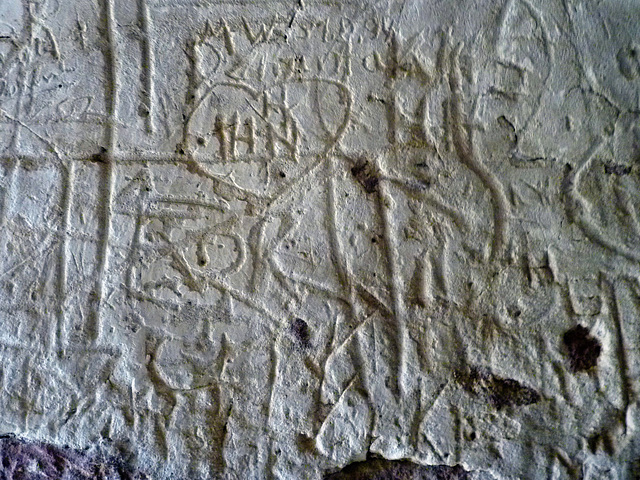Michelstadt
Seligenstadt - Einhardsbasilika
Seligenstadt - Einhardsbasilika
Seligenstadt - Einhardsbasilika
Seligenstadt - Einhardsbasilika
Seligenstadt - Einhardsbasilika
Eichstaett - Cathedral
Eichstaett - Cathedral
Eichstaett - Cathedral
Eichstaett - Cathedral
Eichstaett - Cathedral
Breakfast in Bavaria
Tholbath - St. Leonhard
Tholbath - St. Leonhard
Tholbath - St. Leonhard
Tholbath - St. Leonhard
Tholbath - St. Leonhard
Tholbath - St. Leonhard
Moosburg - St. Kastulus
Moosburg - St. Kastulus
Moosburg - St. Kastulus
Moosburg - St. Kastulus
Moosburg - St. Kastulus
Michelstadt - Einhardsbasilika
Michelstadt - Einhardsbasilika
Michelstadt - Einhardsbasilika
Kloster Eberbach / Eberbach Abbey
Kloster Eberbach / Eberbach Abbey
Kloster Eberbach / Eberbach Abbey
Kloster Eberbach / Eberbach Abbey
Kloster Eberbach / Eberbach Abbey
Kloster Eberbach / Eberbach Abbey
Kloster Eberbach / Eberbach Abbey
Kloster Eberbach / Eberbach Abbey
Kloster Eberbach / Eberbach Abbey
Kloster Eberbach / Eberbach Abbey
Kloster Eberbach / Eberbach Abbey
Kloster Eberbach / Eberbach Abbey
Kloster Eberbach / Eberbach Abbey
Linden - St.-Peters
Linden - St.-Peters
Linden - St.-Peters
Linden - St.-Peters
Linden - St.-Peters
Linden - St.-Peters
Location
Keywords
Authorizations, license
-
Visible by: Everyone -
All rights reserved
-
114 visits
Michelstadt - Einhardsbasilika


The Carolingian "Einhardsbasilika" can be found in Steinbach, a district of Michelstadt, next to the moated castle of Fuerstenau.
Einhard, educated by monks in Fulda, was an important adviser of Charlemagne and his son Louis the Pious. He is the author of the "Vita Karoli Magni", the biography of Charlemagne. He was the successor of Alcuin of York and possibly of friend of Bernhard of Aniane. Einhard was a well connected intellectual of his time, maybe an early "spin doctor".
Louis the Pious gave Einhard this property for the foundation of an abbey. Einhard started the erection of the three nave basilica, that he had planned as a burial place, in 824. Einhard had even sent his servant Ratleik to Rome, to acquire some relics. When Ratleik returned, he had the relics of martyrs St. Marcellinus and St. Peter. Though it was illegal to "steal" relics from the catacombs in Rome, Ratleik had been very sucessful. But as soon as the relics were placed here, Einhard suffered from haunting nightmares. It came out, that the relics did not like the place at all. They suffered as well. So Einhard had them transferred to a Seligenstadt (50kms north), where he built another Einhardbasilika. The relics felt comfortable and Einhard and his wife Emma found a burial place there as well.
The Einhardbasilika seen here, got forgotten totally. Altered and rebuilt many times, vogtei of the Lorsch abbey, then a nunnery for a while, later a hospital and finally a barn. It was bought by the House of Erbach in 1542 and has served as a burial ground for the House in the 14th century. That saved it, as the Counts paid some repairs from time to time.
When the barn was discovered as the lost Einhardbasilica, a part of a Carolingian monastery, in the 1870s, it was about to collapse. For decades it was hidden under scaffoldings - but since it has a new roof, it is "safe" again. The House of Erbach sold the structure to the state Hesse in 1967.
A stair leads down from the former transept to the small crypt. Near the entrance the walls are covered with plaster - and the plaster is covered with carved graffitti.
Einhard, educated by monks in Fulda, was an important adviser of Charlemagne and his son Louis the Pious. He is the author of the "Vita Karoli Magni", the biography of Charlemagne. He was the successor of Alcuin of York and possibly of friend of Bernhard of Aniane. Einhard was a well connected intellectual of his time, maybe an early "spin doctor".
Louis the Pious gave Einhard this property for the foundation of an abbey. Einhard started the erection of the three nave basilica, that he had planned as a burial place, in 824. Einhard had even sent his servant Ratleik to Rome, to acquire some relics. When Ratleik returned, he had the relics of martyrs St. Marcellinus and St. Peter. Though it was illegal to "steal" relics from the catacombs in Rome, Ratleik had been very sucessful. But as soon as the relics were placed here, Einhard suffered from haunting nightmares. It came out, that the relics did not like the place at all. They suffered as well. So Einhard had them transferred to a Seligenstadt (50kms north), where he built another Einhardbasilika. The relics felt comfortable and Einhard and his wife Emma found a burial place there as well.
The Einhardbasilika seen here, got forgotten totally. Altered and rebuilt many times, vogtei of the Lorsch abbey, then a nunnery for a while, later a hospital and finally a barn. It was bought by the House of Erbach in 1542 and has served as a burial ground for the House in the 14th century. That saved it, as the Counts paid some repairs from time to time.
When the barn was discovered as the lost Einhardbasilica, a part of a Carolingian monastery, in the 1870s, it was about to collapse. For decades it was hidden under scaffoldings - but since it has a new roof, it is "safe" again. The House of Erbach sold the structure to the state Hesse in 1967.
A stair leads down from the former transept to the small crypt. Near the entrance the walls are covered with plaster - and the plaster is covered with carved graffitti.
- Keyboard shortcuts:
Jump to top
RSS feed- Latest comments - Subscribe to the comment feeds of this photo
- ipernity © 2007-2024
- Help & Contact
|
Club news
|
About ipernity
|
History |
ipernity Club & Prices |
Guide of good conduct
Donate | Group guidelines | Privacy policy | Terms of use | Statutes | In memoria -
Facebook
Twitter

Sign-in to write a comment.